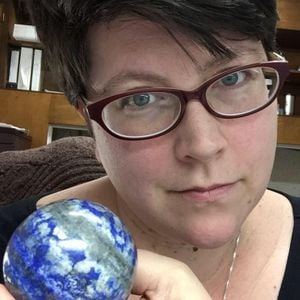NATIONAL MUSEUM OF NATURAL HISTORY
How Exhibit Writers Tackled Earth’s 4.6 Billion Year History in ‘Deep Time’
Exhibition writer, Angela Roberts Reeder, shares what it took to write the script for the new “David H. Koch Hall of Fossils - Deep Time,” now open at the Smithsonian’s National Museum of Natural History.
/https://tf-cmsv2-smithsonianmag-media.s3.amazonaws.com/blogging/featured/NMNH-2019-00599.jpg)
They say it takes a village to raise a child. The same could be said for writing an exhibition, especially one as large and comprehensive as the new “David H. Koch Hall of Fossils – Deep Time.” For this project, we had a team of four writers whose job was to pique our visitors’ curiosity about the natural world through engaging stories, compelling experiences and plain language.
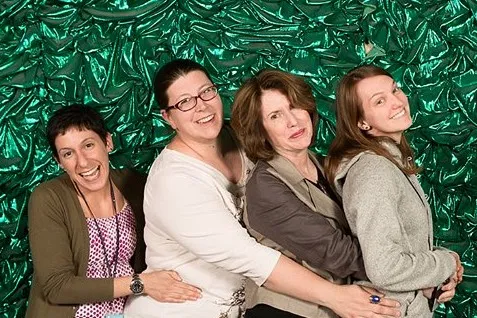
Before we put pen to paper for what would eventually go on the wall, we spent countless hours doing our research. Only one of our writers had a science background and none of us were experts in deep time. We read scientific articles and books about evolution, ecology, the history of life and, of course, dinosaurs. We talked to curators and other scientific specialists to understand the stories they wanted to tell, to learn about the newest research findings and to get a sense of the nuances of interpreting fossil evidence. We even looked at children’s books to see how others had explained deep time and fossils to kids and their parents.
At the same time, we needed to understand our audience – the visitors who come to the museum. Siobhan Starrs, the exhibition developer/project manager for “Deep Time,” led a series of evaluations to make sure the team understood our visitors’ reasons for coming to the museum, how they best experience our exhibitions and the knowledge they already had about the history of life on Earth. Evaluators and staff asked about the kinds of stories and experiences most excited them – and which ones were a bit confusing. Then we began to write.
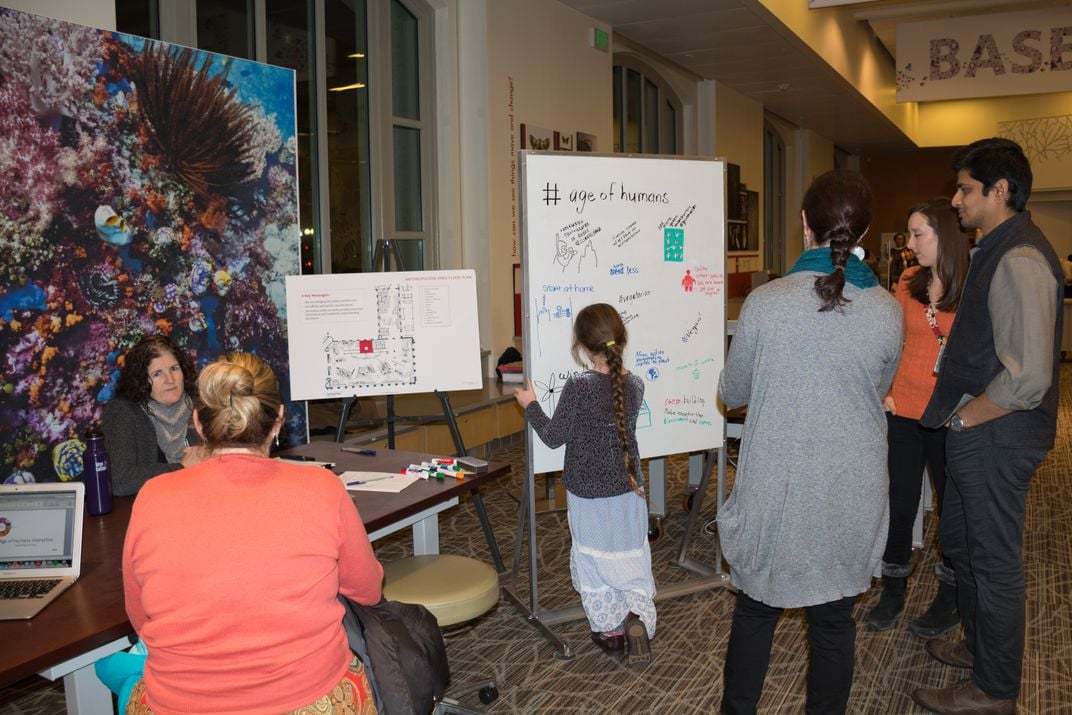
Each writer took at section of the exhibition and wrote a first draft, consulting her notes and the Museum’s curators. This first draft (and the second and the third) went through multiple reviews, discussions and revisions to get the stories and the language just right. We tested visitor reactions to some of the labels we had written. In a big moment of discovery, we learned from visitor testing that many of our visitors did not know that “fossil fuels” were literally made of real fossils. The majority interviewed thought it was just a “catch phrase.” We used that newfound knowledge to write and design a prominent panel about how fossil fuels form, how they are extracted and how burning them impacts our climate.
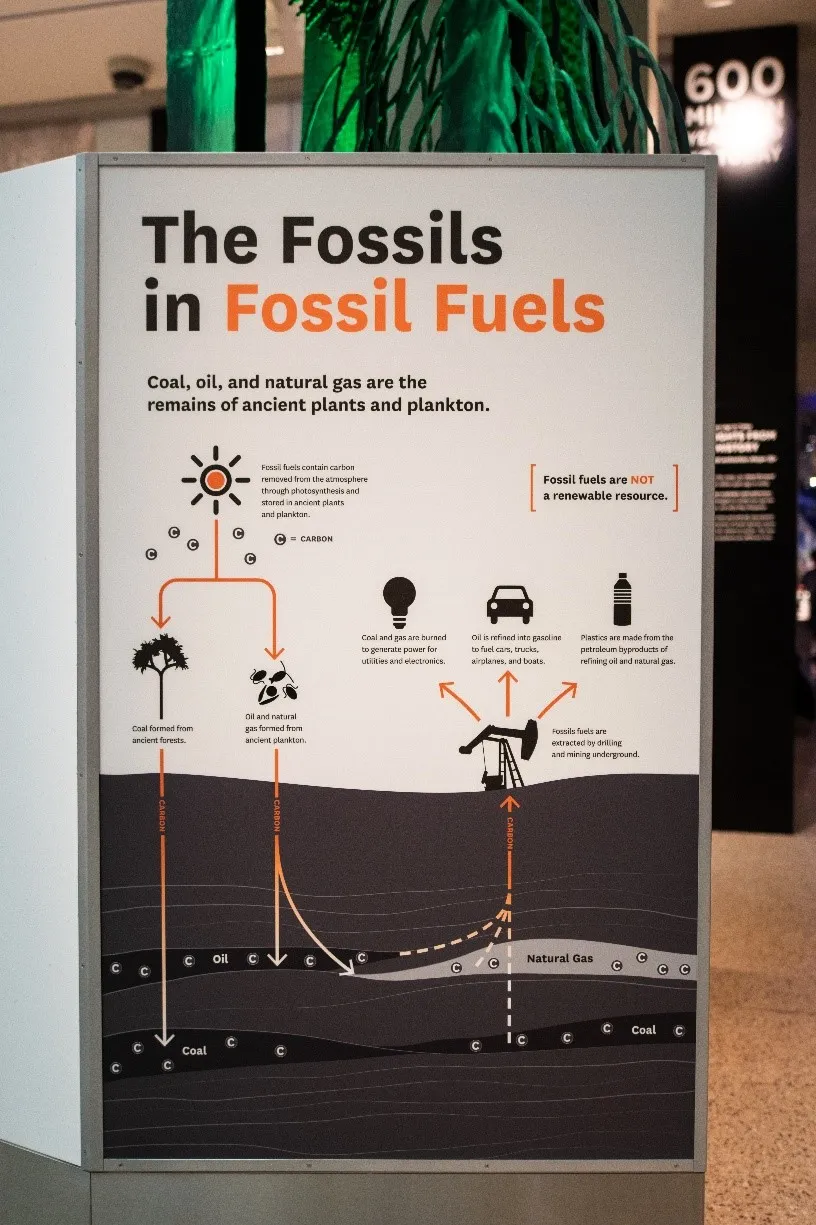
Once our curatorial staff approved the first draft, we split the text up “horizontally.” Each writer took a different type of label (such as section texts, “how do we know” labels, and specimen ID labels) and edited those labels to ensure that they had a similar voice throughout the exhibition. Multiple people throughout the Museum, including exhibitions and education staff, also reviewed this draft to make sure the text was accessible to a broad audience.
Once we had a final draft, the script went to the graphic designers for lay out, but our job was not yet done! We still had to review all the panels and labels as they were designed to make sure no typos snuck in. And science doesn’t stand still. About a year before the exhibition was scheduled to open, a new finding pushed back the date for the first modern human from 150,000 to 300,000 years ago! All the dates referencing human evolution in the exhibition had to be checked and changed.
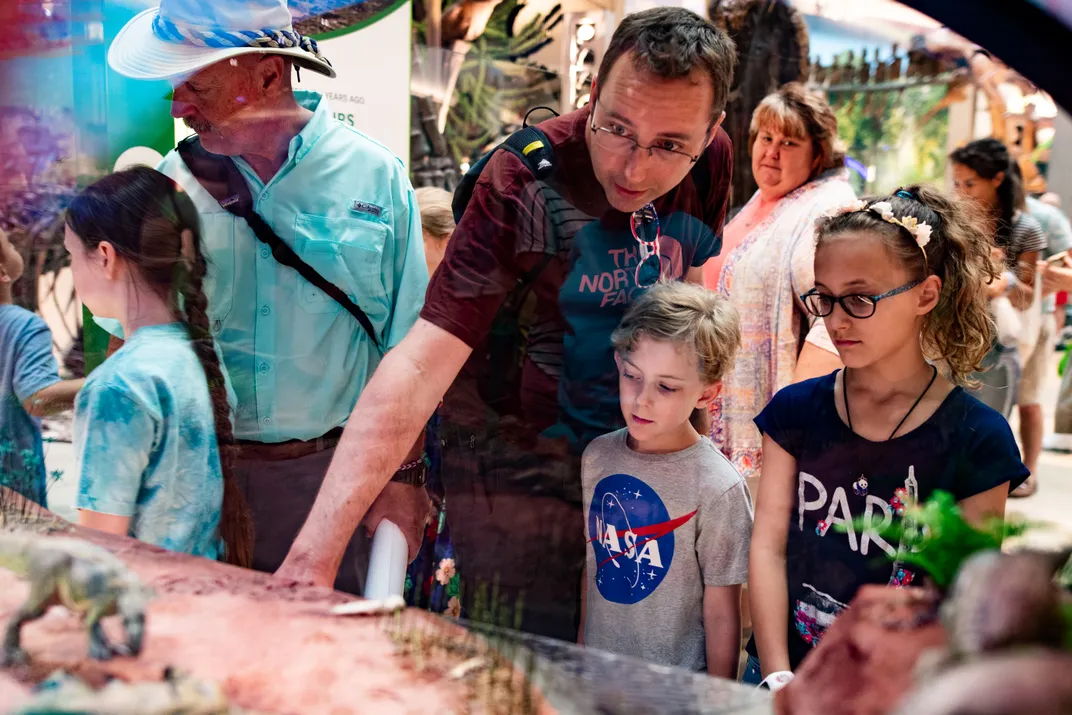
Finally, the day of the public opening came. I wandered the exhibition with the other writers, and we watched as visitors gazed at the awesome specimens and looked for answers and meaning in the labels and text we had written. We saw families discussing what they saw and read. We saw children reading the labels to their parents. At one point, I broke into tears – joyful tears. This is what I had hoped for while working on “Deep Time.” I want our visitors to fall in love with the natural world in all its splendor and complexity, and beyond my wildest imagining, they were doing just that!
Related Stories:
Ever Wonder how Exhibits are Made? Here’s Your Answer.
The Experts Behind the New Fossil Hall Wrap Their Minds Around ‘Deep Time’
Try These Hands-on Activities in the Smithsonian’s New Fossil Hall
Old Fossils, New Meanings: Smithsonian Exhibit Explores the History of Life and What it Means for Our Future
Q&A: Smithsonian Dinosaur Expert Helps T. rex Strike a New Pose

